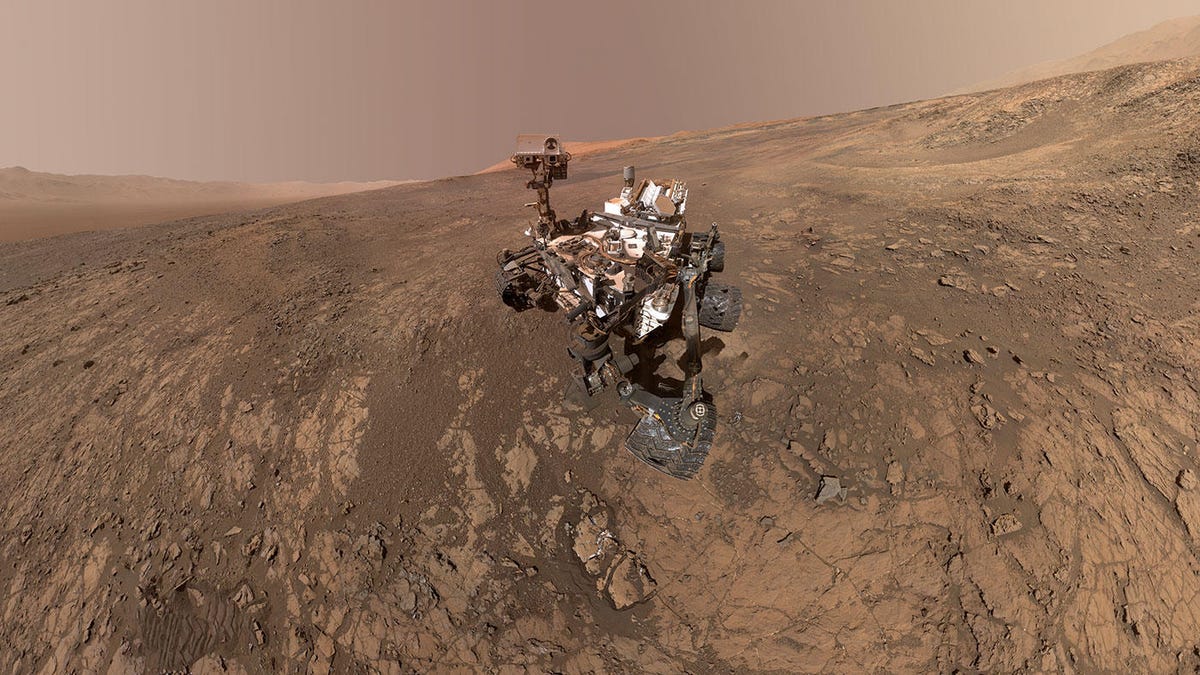Mars mountain photobombs NASA's Curiosity rover selfie
Look out behind you, Curiosity. Mount Sharp wants in on your Mars selfie.
NASA has been on a fun run lately when it comes to exceptional photos involving its Mars Curiosity rover.
The recent riches include an adorable selfie that makes the machine look like Wall-E and a jaw-dropping panorama of the Gale Crater. The latest entry is a full-body selfie starring a photobombing mountain.
The selfie shows Curiosity hanging out on Vera Rubin Ridge, a formation named for an influential astronomer. The sloping landscape right behind the rover is scheduled to be the next area the machine will explore.
A lighter-looking formation appears just behind Curiosity's mast and "head." This is Mount Sharp pulling a look-at-me photobomb, which is pretty much the Mars equivalent of making bunny ears behind someone's head.
Mount Sharp is a 3-mile-high (almost 5 kilometers) mountain in the middle of the expansive Gale Crater. The base of Mount Sharp and the ancient landscape layers found there are one of the rover team's main interests.
"These layers formed in the presence of water -- likely due to a lake or lakes where sediments accumulated, which formed these layers inside Gale Crater," says NASA.
While it looks like the rover possesses a selfie stick, NASA actually had to stitch together dozens of images taken on Jan. 23 by the rover's Mars Hands Lens Imager camera. This approach lets us see the whole rover as well as its fascinating surroundings.
The Smartest Stuff: Innovators are thinking up new ways to make you, and the things around you, smarter.
Rebooting the Reef: CNET dives deep into how tech can help save Australia's Great Barrier Reef.


